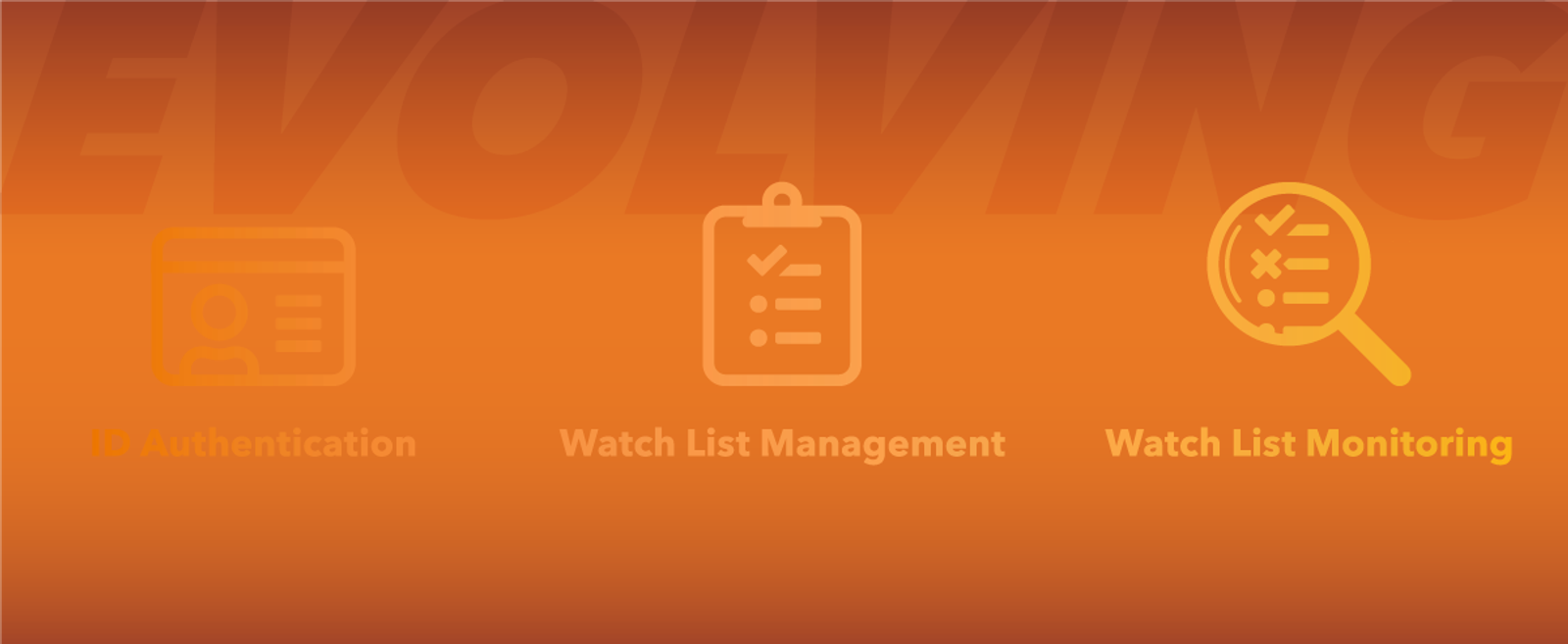There is an abundance of data available on individuals and the attributes about them that might affect an organization’s security or success when transacting with them. Leaders know they should be making use of that data, but the practicalities of how to do it often get in the way. Failure to figure out a solution not only leaves an organization vulnerable to fraud or fines, but it can also mean lost opportunities for revenue and relationship-building.
In the realms of Knowing Your Customer and organizational security, checking and monitoring an individual’s identity against internal and external watch lists is a key step to leverage data, and part of a multi-layered approach to ID authentication. For highly regulated industries like gaming and age-restricted retail, performing this step both initially and on demand can improve compliance and help avoid fines. But list checking isn’t just about keeping an eye out for “bad guys”—it can also help an organization deliver VIP service or other customized solutions to patrons on its own internal lists.
Real-Time Checks, Real-Time Service
The type of watch list check recommended by Veridocs is part of a layered approach to being certain you know who you are transacting with. That approach starts with an ID being authenticated at an entry point, transaction point, or point of sale. Then, data including the patron’s name, date of birth, the document number and issuing country can be used for a real-time comparison against government, proprietary, and custom watch lists. This real-time check allows an organization to apply a high level of vigilance in its ID checks, flagging any patrons who need further screening or special service before they are enrolled, allowed onto the premises, or a purchase is finalized.
Organizations can customize or add lists they check to make it simpler to comply with local regulations or to meet their own individual goals. For instance, casinos may check against a “deadbeat parent” list, where a state law dictates that any gambling winnings must be used to satisfy a parent’s outstanding child support. States such as Pennsylvania have a “self-exclusion” list for people with gambling problems that allows people to bar themselves from casinos, but they are allowed to change their status every 24 hours. Certain jurisdictions may have a “do not serve list” that bars and liquor stores need to be ever vigilant in complying with. The constantly changing nature of these lists makes it critical for properties to use a real-time, automatically updated list-checking solution in order to remain in compliance.
Performing this list check alongside an enrollment—such as into a casino player’s club or customer loyalty program—helps ensure that only vetted patrons are allowed into the “club” and gain the benefits of the enrollment. Some establishments conduct list checks in batches at the end of the day or week, which leaves open a window in which the patron is either waiting for approval/admittance (not ideal customer service), or in which an unwanted patron may be unknowingly admitted, increasing the organization’s susceptibility to fraud or fines.
Beyond Gaming Applications
The most abundant examples of list checking come from the gaming industry, but other scenarios where it is useful to perform a real-time list check include entrance and access control, sales of controlled substances like tobacco or cannabis, hotel check-in, or opening a new bank account. Any instance where it is helpful for staff to know whether an individual is on a list—whether they are a VIP, a member of a frequent buyer’s club, a political representative, a barred individual, etc.—is the ideal opportunity for list checking technology.
Watch List Monitoring for Ongoing Compliance
In addition to an initial watch list check, many organizations find it beneficial to perform a periodic re-check or “rescrub” of their lists of enrollees or “members”. A watch list monitoring program can help detect issues that may arise between the patron's initial enrollment and later transactions. For instance, a patron may be “clean” when they’re first enrolled, but that doesn’t mean they’re clean forever—they might later be convicted of a crime that should bar them from the organization or from purchasing certain items. Or, as mentioned above, states like Pennsylvania have self-exclusion lists that can be updated daily. If the property isn’t periodically rescrubbing its list, those patrons can gain entry or use their enrollment benefits long after they should have been banned, leaving the organization vulnerable to fraud or fines.
Utilizing list checking technology is a practical step that organizations can easily implement to efficiently leverage the data available to them—through both internal and external sources. By adopting this element of a multi-layered security check, organizations can be certain they are taking steps to continuously protect themselves from fines and fraud, admitting only the patrons they want into their businesses and onto premises.
Published: 10/18/2021
Updated: 11/16/22



